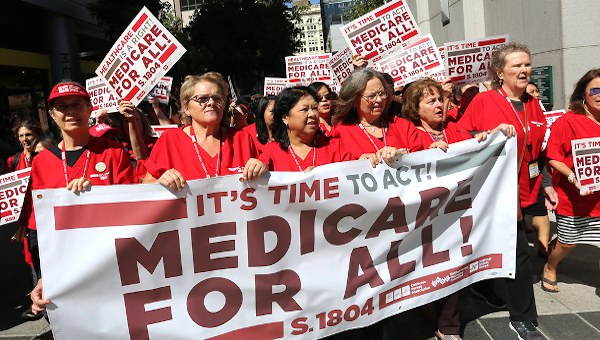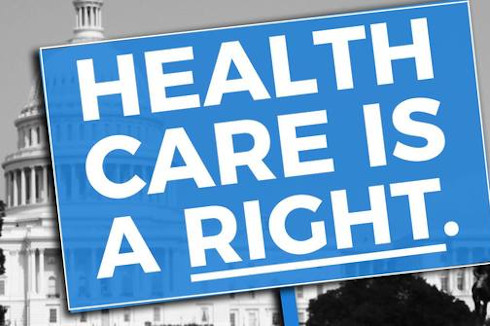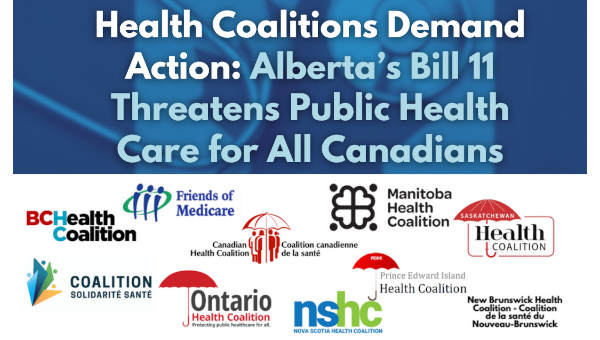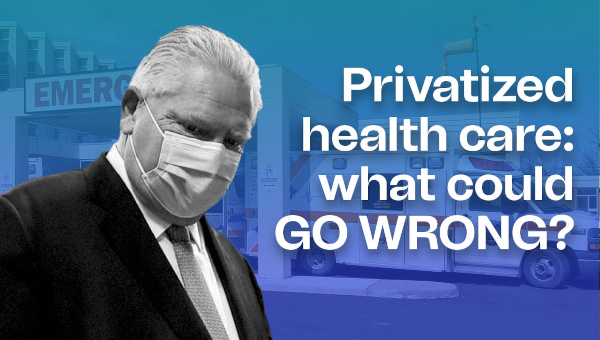Healthcare Reform in a Post-Pandemic World
The industrialized world’s most unequal and inefficient healthcare system underwent a stress test this past pandemic year and failed miserably. Here are just a few of the indicators: the world’s highest number of infections and deaths; massive shortages of workers, supplies, and equipment; uncoordinated response and treatment; botched vaccine rollout; and egregious profiteering. Many other nations had significant shortfalls in their pandemic response, but only the United States performed so dismally along nearly all parameters.
The worldwide pandemic-induced recession also hit the United States particularly hard with the unemployment rate increasing five times faster than the Organization for Economic Co-operation and Development (OECD) average during the first six months of the COVID-19 recession. While the first round of COVID-relief legislation provided a robust supplement to state unemployment benefits, the bureaucratic functions of most states have become so degraded that the unemployed often waited months to collect them. Public transportation systems – underfunded for decades – are facing an existential crisis at a time when many frontline workers rely on them to get to their jobs. Public education is not far behind.

Workers: Some Unemployed and Others Essential
While thirty-three million workers experienced mass unemployment, the fifty-five million workers classified as essential who were unable to work from home often experienced an increase in hours, while facing much higher risks of COVID-19 exposure. The Occupational Safety and Health Administration (OSHA), tasked with protecting the health and safety of American workers, refused to even consider an emergency standard and failed to investigate and issue citations in thousands of complaints as meatpacking workers, transit workers, and frontline healthcare providers suffered illness and death in unprecedented numbers. To add insult to injury, California Proposition 22, passed this November as COVID-19 cases were peaking in the state, exempts so-called “gig” workers like Uber and Lyft drivers and delivery workers from the health and safety protections that they would have been entitled to as employees.
The crisis also laid bare the racial disparities baked into the system. Black, Latinx, and Native Americans suffered much higher illness and death rates. More than half of Latinx households and almost half of Black households, compared to 21 percent of white households, according to a Commonwealth Fund survey, reported financial difficulties as a result of the pandemic.
While quite a bit of this dysfunction can be attributed to the criminal incompetence and indifference of the Trump administration (not to mention its downright undermining of effective public health measures), the hollowing out of the public sector by a generation of deliberate neoliberal sabotage made the United States uniquely unprepared to respond to this type of crisis and exposed its consequences: a tattered social safety net; erosion of worker power; fiscal, political, and regulatory policies all geared to the massive upward redistribution of wealth; and the atrophying of even the most basic public health and public safety functions of the state. It was as if conservative activist Grover Norquist’s famous aphorism had finally come to pass: “I don’t want to abolish government. I simply want to reduce it to the size where I can drag it into the bathroom and drown it in the bathtub.”
As we emerge from the crucible of the pandemic, it is a good time to take stock of how it might have changed the political calculus of healthcare reform in the United States and to assess the prospects for both transformative change and constructive engagement with the healthcare policy priorities of the Biden administration.
An Accident of History
A central element of the US healthcare system’s catastrophic failure in the face of the pandemic is its linkage to employment. Nearly half of all Americans access healthcare through employer-provided health insurance. This situation is unique in the industrialized world and is an artifact of an earlier era. During World War II, many US employers began to establish employer-provided health insurance benefits as a way to retain workers in the midst of a labor shortage and wartime wage caps. In the immediate postwar period, plans by the labor movement and other elements of the New Deal coalition to expand the social wage met with organized resistance from resurgent capital. In 1946, the Wagner-Murray Dingell national health insurance bill went down in defeat. The following year witnessed the passage of the Taft-Hartley Act, which placed severe constraints on the ability of unions to organize, bargain, and strike and is still the law of the land. Its enactment inaugurated an era of rampaging anti-communism and race baiting that sent the powerful postwar labor movement into a long retreat.
As unions in much of the rest of the industrialized world were leading the fight to construct robust publicly funded universal healthcare systems that treated healthcare as a right available to all, the US labor movement helped to craft a “second best solution” that turned healthcare into a benefit linked to employment. Corporate America piled on and offered elaborate benefits in order to recruit and retain employees and keep unions out. While creating a measure of healthcare security for many working-class families, this system was flawed from the beginning. It created tiers of coverage that reinforced employment-based racial and gender disparities and massive amounts of “churn” that disrupted continuity of care for even the best insured. Particularly after the expansion of for-profit health insurance and healthcare providers beginning in the 1970s, more and more administrative inefficiency was built into the system to facilitate profit taking, until, by the early twenty-first century, the US healthcare system was twice as expensive as the OECD average.
The System Unravels
Even before the pandemic, it was becoming increasingly clear that this postwar system had become unsustainable. Beginning in the 1980s, as costs exploded, employers began to make reductions in coverage and to shift costs onto their workers. Disputes over healthcare coverage became the biggest source of strikes, lockouts, and concession bargaining. By 2018, the Milliman Medical Index was reporting that total healthcare costs for a family of four with decent employment-based coverage were exceeding $28,000 per year. That adds up to $14 per hour worked for a full-time employee – almost twice the federal minimum wage. On average, employers in 2018 paid about $15,000 of healthcare costs for a family of four, and the worker paid $13,000 in co-insurance, out-of-pocket charges, co-pays, deductibles, and other charges. These amounts already exceed the average hourly wage in food services and retail occupations and are increasing two times faster than the rate of wage increases for all workers, putting them on track to exceed average wages in manufacturing and other core industries within the next decade. The percentage of total healthcare costs paid by the worker has gone up nearly every year since it was first tracked in the 1990s. As economist Herbert Stein famously postulated in 1985, “If something can’t go on forever, it will stop.”
The urgent need for affordable employer-provided health coverage has eroded the individual and collective bargaining power of workers and is a major driver of wage stagnation. A recent Gallup poll found that when given the choice between a 10 percent increase in household income or a freeze in healthcare costs for the next five years, 61 percent of Americans would choose the freeze. The same poll revealed how much Americans worry about the precariousness of their employer-provided coverage. And right they are to worry. When healthcare is a benefit linked to employment, the healthcare ends when the job ends.
Throughout the Democratic primary debates, candidate Joe Biden consistently claimed, “One hundred sixty million people like their private insurance.” Right after Super Tuesday, the COVID recession hit workers hard. Every week from mid-March 2020 through January 2021, more than one million workers filed initial unemployment claims (including claims for pandemic unemployment assistance), thus, for many of these workers, disrupting their connection to their private insurance plan. As a result, at least twelve million people have become uninsured in the midst of the worst public health crisis in the past century. There is no longer any room for debate. The US healthcare system is in free fall. It is incapable of delivering the basic healthcare security that all people deserve as a matter of right. It is time for it to go.
Momentum for Change Grows
Given the scope and breadth of the crisis, it is no wonder that demands for change are growing. In exit polls conducted by Fox News, 72 percent of the voters in the November 2020 election were in favor of a “government-run healthcare plan” despite the fact that Fox chose the most polarizing way to ask the question. (Public Citizen reports that characterizing Medicare for All as “a government-run health system” polls 9 points lower than characterizing it as “a national health plan, sometimes called Medicare for All, in which all Americans would get their insurance from a single public plan.”) Medicare for All was also a winning issue in the congressional races. Even though the Democrats lost House seats, not a single co-sponsor of the Medicare for All Act was defeated. This included Medicare for All supporters in tight swing districts, such as Democratic Rep. Katie Porter in Orange County, California. And progressive new members, like Democrats Cori Bush in Missouri and Jamaal Bowman from New York, have vowed to place Medicare for All at the center of their congressional agenda.
Union support for Medicare for All peaked in January 2019 when, for the first time since the early 1990s, unions representing a majority of organized workers endorsed House Resolution (HR)1384 – The Medicare for All Act of 2019. This included a number of large and influential unions like the Machinists, the Service Employees, the National Education Association, and the American Federation of Teachers whose President, Randi Weingarten, gave a passionate speech in support of Medicare for All at the rally where the bill was launched in 2019. While there has been some considerable backsliding since then as some unions realigned their positions to conform to those advocated by the political candidates they backed, the structural crisis in employment-based healthcare continues to drive home the need to take healthcare off the bargaining table. Despite heroic efforts to keep their members covered during the shutdown, union health funds are running out of money as the economic crisis extends into 2021. And continuing shortfalls in state and local government revenues will threaten millions of jobs and increase pressure on public-sector unions to negotiate major concessions on healthcare benefits.
Despite the concerns that national union leaders may have about disrupting their relationships with political leaders, more and more union members have come to the conclusion that the time has come to fight hard for Medicare for All. This was borne out in last year’s Nevada Caucuses when the Culinary Union – a union with a distinguished history of membership mobilization and activism – urged its members to not vote for Bernie Sanders because his Medicare for All proposal would undermine the union health plan that members had fought long and hard to establish and maintain. Polling shows that the members rejected this advice and voted for Sanders precisely because he supported Medicare for All.
Some unions may still believe that bargaining for better healthcare benefits than other working-class Americans enjoy will give them a “union advantage” that makes it easier to organize new members and retain the loyalty of existing members. But workers have learned how precarious their healthcare has become. They see the travails of their family, friends, and neighbors who might not have the good fortune to be working in a stable job under a strong union contract. They will support a labor movement that speaks on behalf of the entire working class in its advocacy for Medicare for All. More forward-looking unions, like UNITE HERE Local 11, are already talking to their members about how they would be stronger if they were freed from the burden of having to negotiate decent health coverage for their members and families.
The Chimera of a Public Option
After defeating a Medicare for All amendment, last summer’s Democratic Convention adopted a healthcare platform that contained a mishmash of generally well-intentioned incremental proposals, together with a call to enact a strong public option. This was a concession to those who believed in the goal of decommodified healthcare treated as a public good. The platform proposed adding a publicly administered “high quality” plan without deductibles and with no co-payments for primary care to every Affordable Care Act (ACA) marketplace. “Everyone will be eligible to choose the public option or another ACA marketplace plan.”
Supporters of the public option often present it as a more circuitous route to single-payer Medicare for All for those who, as Frederick Douglass once said, “want the ocean without the awful roar of its waters.” After all, if everyone could choose a superior public plan with lower costs and more extensive coverage, would not private insurance just fade away without the unpleasant task of having to take on the concentrated political power of the medical industrial complex in a straight-up legislative fight?
Even putting aside the absurd hope that the private insurance industry and its army of Capitol Hill lobbyists could somehow be lulled or fooled into thinking that they were not faced with an existential threat and move to kill it like they did in Connecticut in 2019, adding an additional public choice in a healthcare “marketplace” is not the slow boat to healthcare utopia. There are intrinsic problems when public goods like healthcare are treated like commodities. A system designed to accommodate profit seeking and multiple payers can never achieve the efficiencies and cost savings of a social insurance model. Competing health plans with different costs, co-pays, and deductibles reinforce inequality and disparity and make a single standard of care unachievable. Commodified health insurance products also generate all kinds of unanticipated consequences, including the dreaded “adverse selection” in which decent coverage is undermined by less expensive shoddy insurance plans, and for-profit insurers game the system by cherry picking the healthiest subscribers, finding ways to dump the sick ones on the hapless public plan.

Adding an additional choice will do nothing to bend the cost curve of the world’s most expensive healthcare system. Nearly all economists concur that Medicare for All would achieve cost savings of 20 to 30 percent because of lower administrative costs and limitations on profit taking. Without those cost savings, we would have to pay “market rates” to expand affordable coverage to the 40-plus-million uninsured Americans and the 50-plus-million underinsured ones in order to achieve universal coverage.
Finally, the public option would still rely on employer-provided insurance to provide access to healthcare for most working Americans. Breaking the continued linkage of health insurance to employment is essential to increasing the bargaining power and security of workers. If unions no longer had to bargain for basic healthcare for their members, monies would be freed up to negotiate real “union advantage” benefits, like paid family leave and child and elder care, that could help launch a revitalized labor movement.
The Biden Administration’s Incrementalism
President Joe Biden does not support Medicare for All. He ran against it in the primaries and made a point of distancing himself from it in the general election. In his 36 years as a US Senator, he never once supported single-payer healthcare reform initiatives. He has been a consistent advocate of “kinder gentler” market-based healthcare mediated by private insurance and tempered by regulation and subsidized coverage for those least able to pay. The Medical Industrial Complex has shown its gratitude to him. In the last election cycle, Big Pharma shifted much of its political contributions from the Republican to the Democratic parties, and America’s Health Insurance Plans (AHIP), the health insurance lobbying group, sent a letter of congratulations to Biden within hours of him being declared the winner of the election. And, while progressives may be tempted to spend the next four years chasing the brass ring of the public option, the Biden administration has already made it clear that it does not consider it a priority.
President Biden’s administration will likely focus on making incremental fixes to the ACA, such as expanding access to community health centers and rural clinics, greater access to mental health and substance abuse treatment, raising the income level for eligibility to subsidized plans through the ACA marketplaces, and finding ways to expand Medicaid coverage to the states that continue to refuse to accept federal funding to expand it for their own residents. These are all worthy efforts but fall far short of addressing the systemic and catastrophic failures of the US healthcare system.
Opportunities for Engagement
It is clear that we are facing a multi-year campaign to achieve a comprehensive single-payer Medicare for All system that would finally make healthcare a right for everyone in America. There are, however, a number of opportunities where Medicare for All advocates could constructively engage with the Biden administration and a Democratic House and Senate to advance a social insurance model of healthcare access and delivery:
- Emergency Relief: Tens of millions of Americans continue to suffer the effects of the COVID-19 recession, and previous government relief packages have done little to address the healthcare crisis. There is still time to enact legislation along the lines of the Health Care Emergency Guarantee Act of 2020, which would have Medicare pay all healthcare costs for uninsured Americans and all out-of-pocket obligations for those with insurance for the duration of the crisis. This would allow all Americans to access needed healthcare services without fear of financial catastrophe while assuring hard-pressed healthcare providers that they will be reimbursed for all of the care that they give.
- Taking on Big Pharma: The regulation of pharmaceutical prices and controls on pharmaceutical production and marketing are cornerstones of a Medicare for All system. The Biden administration has proposed robust pharmaceutical negotiating authority, and current Medicare for All legislation continues provisions that mirror those of Democratic Representative Lloyd Doggett’s and Senator Sherrod Brown’s Medicare Negotiation and Competitive Licensing Act. This is an effort that Medicare for All advocates should fully support.
- Lowering the Medicare Eligibility Age: President Biden has called for lowering the eligibility age of Medicare to sixty. The AFL-CIO is proposing to lower it to fifty. Decreasing the eligibility age would increase healthcare security for millions without undermining the social insurance model that sustains Medicare. Congress could also consider extending Medicare benefits to children and young adults up to age twenty-six. Since this is the healthiest segment of the population and many children already receive substantial publicly funded coverage through Medicaid, the Children’s Health Insurance Program and other plans, this could be done at a relatively low cost.
- Strengthen and Improve Actually Existing Medicare: Medicare itself has significant out-of-pocket costs and gaps in coverage that are driving the slow privatization of Medicare through the growth of Medicare Advantage private insurance products. It needs to be modernized and improved to eliminate the necessity of private supplemental insurance while, at the same time, enhancing prescription drug coverage and adding dental, long-term care, and other essential services. Current Medicare for All legislation incorporates all of these improvements, and its provisions should be a model for proposed enhancements of current benefits.
- Start Taking on the Long-Term Care Crisis: The pandemic revealed the horrific consequences of our dysfunctional, underfunded, for-profit long-term care system. The public outrage over the mass illnesses and deaths of nursing home residents and workers creates an opportunity to push for an integrated and publicly funded long-term care system that protects the most vulnerable.
- Look to State Options: Several states, including California and New York, have strong movements to enact state-based publicly funded universal healthcare systems on a single-payer model. While state-level systems are inherently more complex and difficult to fund, a breakthrough victory in one or more large states with a sufficient economy of scale could inspire and ignite national reform efforts. The Federal government would have to approve a number of waivers and provisos in order for a state-level system to succeed. President Biden has indicated that he may be open to such experimentation, and Secretary of Health and Human Services Xavier Becerra is a long-time Medicare for All supporter who might be a sympathetic voice in the cabinet.
- Focus on Racial Disparity and Racial Equity: Medicare for All is a necessary but not sufficient condition to begin to address the gross racial disparities and inequities in the US healthcare system. These include disparities that result from decades of occupational and residential racial segmentation as well as the exclusion of most immigrants from public health programs. In addition, the racist mistreatment of Dr. Susan Moore who, died of COVID-19 in an Indiana hospital after repeatedly protesting that she was not being provided the proper care, powerfully illustrates the persistence of inequities in care and treatment faced by people of color, particularly Black Americans. Centering these issues now, as we move toward a strategy for victory is essential. The concerns of people of color must be brought into the construction of the new healthcare system to avoid incorporating the injustices of the past. Just as the great healthcare advances of the mid-1960s came about because of the alliance between the labor movement and a strengthened civil rights movement, our contemporary movement for healthcare justice must be multiracial.
- Build Disciplined Majorities for Medicare for All in the House and Senate: Grassroots organizers need to focus on recruiting additional congressional co-sponsors for Medicare for All legislation. Much of the “low hanging fruit” has been picked, so strategic campaigns need to be waged in targeted districts. Where appropriate, primary challenges should be raised against recalcitrant representatives. Organizers will need to work with House and Senate Medicare-for-All leaders to hold politicians’ feet to the fire. Regular “structure tests” should be administered to assess the strength of congressional support. Bill sponsors can also take advantage of their growing congressional support to hold regular hearings that will fill in any gaps in the legislation, develop consensus around financing Medicare for All, and incorporate the concerns of new constituencies.
Labor Must Lead
Union participation will be crucial for the success of these plans. While great progress has been made, the institutional labor movement must do much more to ensure the victory of Medicare for All. Bringing the organizing capacity and political clout of the labor movement to bear should be the top priority of trade unionists that support healthcare for all. We will win when an overwhelming majority of unions agree to make Medicare for All one of their top two or three political priorities.
Union resistance to Medicare for All is fading as the employment-based healthcare system collapses, but some unionists still believe that their unions will be stronger and more secure if they continue to negotiate basic healthcare benefits for their members. This is of particular concern for public-sector unions, given the 2018 Supreme Court ruling in Janus vs. AFSCME forcing these unions to negotiate on behalf of all workers in workplaces they represent, even when workers opt not to pay union dues. This makes public-sector unions especially eager to show how paying union dues adds value for workers. Many labor leaders also still think that “the members aren’t ready” to embrace Medicare for All. It is up to union members themselves to disabuse their leaders of this notion, and organizers must help to give them the tools to do so.
Some union leaders are also concerned about the staff jobs, membership engagement, and investment in brick-and-mortar facilities that may be lost if their health and welfare funds no longer administer healthcare benefits for their members. It is important to respectfully engage with these concerns and discuss how these funds might be transformed and stabilized if money were freed up that could be used for supplemental and enhanced benefits. Some are also legitimately concerned about the impact of the loss of healthcare administrative and health insurance industry jobs in the transition to Medicare for All. Labor must lead the fight for a just transition for any worker whose job is eliminated or substantially changed as a result of the implementation of single-payer healthcare.
Most importantly, labor leadership, especially at the national level, must be moved away from deferential and instrumental political relationships that prevent our movement from advocating on behalf of the entire working class. This will involve building a vision of independent working-class politics that does not require the mediation of a deeply compromised political establishment. The Sanders campaign’s challenge to the Democratic establishment, the recent successful primary victories over entrenched Democratic icons who previously represented New York, like (former) Rep. Joe Crowley and (former) Rep. Eliot Engel, and the election and re-election of vocal Medicare for All advocates even in swing seats, like Rep. Katie Porter’s Orange County, California district, all show that this vision can resonate with working-class constituencies.
This is a year in which labor debates its future. The quadrennial AFL-CIO takes place this fall, major elections are scheduled in the Teamsters and other unions, and many unions are facing crucial bargaining fights. It is no accident that many of those working to build a revitalized labor movement are also stalwarts in the Medicare for All movement. As the Biden administration settles into office and the Democratic political establishment seeks a return to neoliberal normalcy, Medicare for All activists must challenge the labor movement to step up and accomplish the historic goal of making healthcare a right for everyone in America. •
This article first published on the New Labor Forum website.





